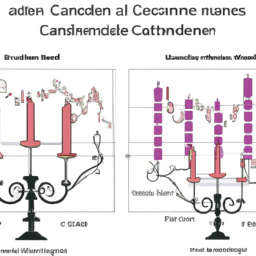
Candlestick Patterns Explained
Candlestick patterns are an important tool used by traders to analyze and predict market trends. By observing the shape and color of candlesticks, traders can gain insights into the psychology of market participants and make informed trading decisions. In this article, we will explore some common candlestick patterns and their significance.
Bullish Candlestick Patterns
1. Hammer:
The hammer is a bullish reversal pattern that forms at the bottom of a downtrend. It has a small body and a long lower shadow, resembling a hammer. This pattern indicates that buyers have stepped in and are likely to push the price higher.
2. Bullish Engulfing:
The bullish engulfing pattern occurs when a small bearish candle is followed by a larger bullish candle that completely engulfs the previous candle. This pattern suggests a shift in momentum from sellers to buyers and often precedes a bullish move.
3. Morning Star:
The morning star pattern is a three-candle pattern that forms after a downtrend. It consists of a large bearish candle, a small bullish or bearish candle, and a large bullish candle. This pattern indicates a potential trend reversal and is considered a strong bullish signal.
Bearish Candlestick Patterns
1. Shooting Star:
The shooting star is a bearish reversal pattern that forms at the top of an uptrend. It has a small body and a long upper shadow, resembling a shooting star. This pattern suggests that sellers have entered the market and the price may decline.
2. Bearish Engulfing:
The bearish engulfing pattern is the opposite of the bullish engulfing pattern. It occurs when a small bullish candle is followed by a larger bearish candle that engulfs the previous candle. This pattern indicates a shift in momentum from buyers to sellers and often precedes a bearish move.
3. Evening Star:
The evening star pattern is the bearish counterpart of the morning star pattern. It consists of a large bullish candle, a small bullish or bearish candle, and a large bearish candle. This pattern suggests a potential trend reversal and is considered a strong bearish signal.
Conclusion
Candlestick patterns provide valuable insights into market sentiment and can help traders make more informed decisions. By recognizing these patterns and understanding their significance, traders can identify potential reversals or continuation of trends. However, it is important to note that candlestick patterns should be used in conjunction with other technical analysis tools for a comprehensive trading strategy.
Remember to practice and gain experience in identifying candlestick patterns before applying them in live trading. With time and observation, you can enhance your ability to interpret candlestick patterns and improve your trading success.